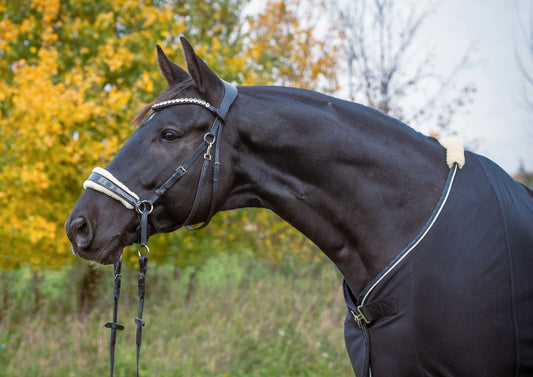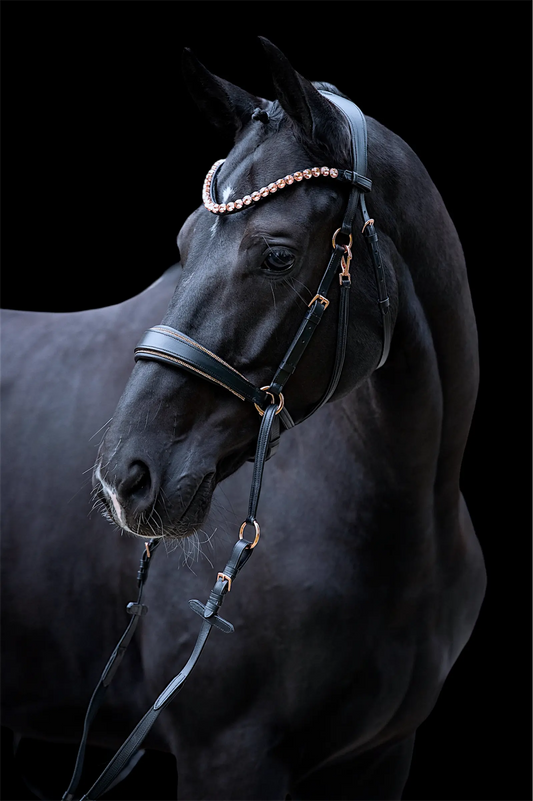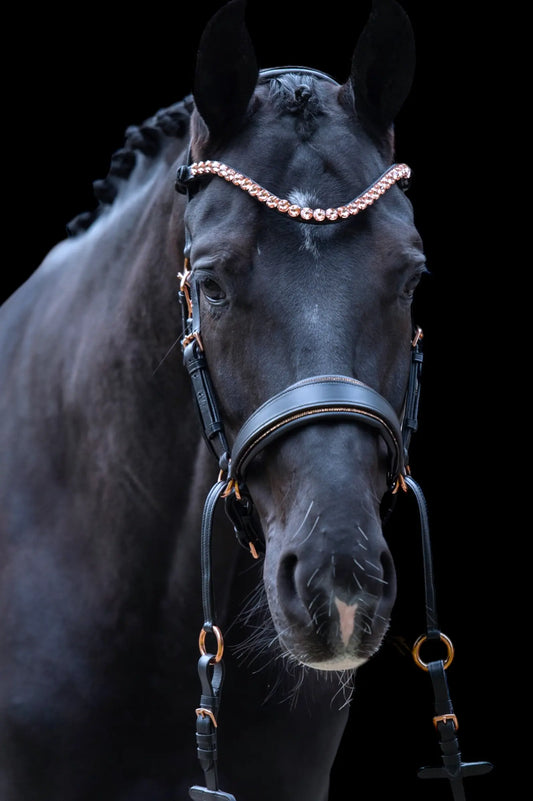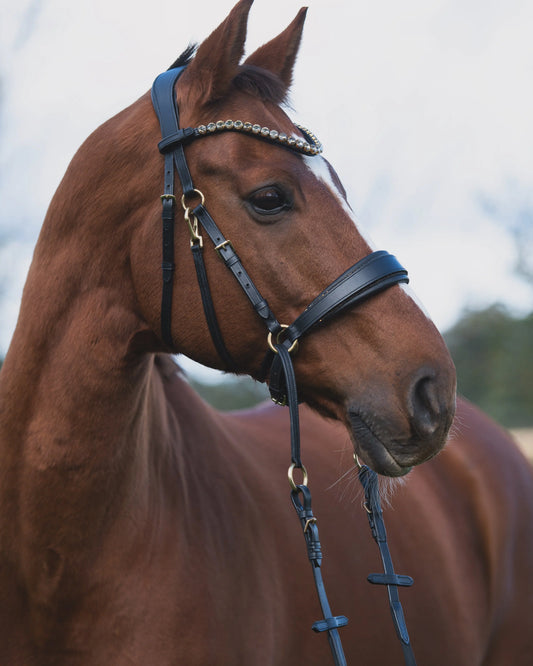What is bitless riding and how does it work? "
Share
Bitless riding is a riding method that relies on direct communication between rider and horse without the use of a bit. The goal is to achieve subtle interaction and harmonious cooperation between the two.
The basic idea behind bitless riding is to focus on the horse's well-being while avoiding unnecessary pressure on the horse's mouth. Instead of a bit, various types of bitless bridles are used, which act on pressure points on the poll, the bridge of the nose, or other areas of the horse's head to facilitate communication.
Bitless bridles come in various designs, such as z.BThe sidepull, the hackamore, or the long bridle. Each type has its own effect and influences the communication between rider and horse.
An important concept of bitless riding is sensitizing the horse to subtle aids and fostering understanding between horse and rider. Through gentle communication through body weight shifting, leg and seat aids, the rider can send precise signals to the horse and receive subtle feedback in return.
Bitless riding requires thorough training for both rider and horse. It's important to choose the right bridle and pay careful attention to the horse's responses and well-being. Comprehensive training aimed at building trust and a bond between horse and rider is crucial for successful bitless riding.
Here is an article section on the advantages of bitless riding:
Choosing bitless riding can offer a variety of benefits for both horse and rider. Below are some of the key advantages of bitless riding:
1. Gentler on the horse's mouth: Bitless riding significantly reduces pressure on the horse's mouth. Unlike bits, there is no direct pulling or leverage on the horse's sensitive mouth. This can help reduce the risk of pressure sores, injuries, and hypersensitivity in the horse's mouth.
2. Improved communication and sensitivity: The absence of a bit allows for more direct and sensitive communication between rider and horse. By providing lighter and more subtle aids through body weight shifting, leg and seat aids, the horse can perceive more subtle signals and respond accordingly. This improved communication leads to a deeper connection and harmony between rider and horse.
3. Increased natural flexibility and freedom of movement: Bitless riding allows the horse to follow its natural movements and reflexes. Without a bit in its mouth, the horse can move its head, neck, and jaw more freely, thus fully utilizing its natural flexibility and freedom of movement. This leads to better balance and a more enjoyable riding experience.
4. Potential relief from bit-related problems: Some horses are sensitive to bits and can develop various problems such as dental problems, mouth injuries, or tension. Bitless riding offers an alternative for these horses, for whom the use of a bit can be uncomfortable or painful. It can offer the opportunity to alleviate existing problems and achieve a more pleasant riding experience.
It is important to note that bitless riding can also present challenges, especially in certain riding situations or disciplines.Proper training, suitable equipment and careful adaptation to the individual needs of horse and rider are essential to make the most of the benefits of bitless riding.
In the next section, we will take a closer look at the challenges of bitless riding and how to address them.
[End of article section on the benefits of bitless riding]
In the next section, we will take a closer look at the benefits of bitless riding and how it can affect the health of a horse's mouth.




